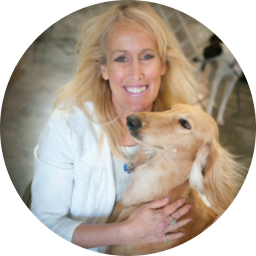Get to know
Beaucerons

Veterinarian reviewed
The Beauceron is one of dogdom’s best kept secrets.
Browse available puppies
Connect with reputable breeders to find the dog of your dreams
At a glance
High Energy
Energy level
4/5
Very Low Maintenance
Grooming
2/5
Extra large
Size
Intelligent, protective, active
Temperament
10-12 years
Lifespan
Highly Trainable
Training
5/5
Medium Vocality
Barking
3/5
At a glance
Energy level
High Energy
Grooming
Very Low Maintenance
Size
Extra large
Temperament
Intelligent, protective, active
Lifespan
10-12 years
Training
Highly Trainable
Barking
Medium Vocality
Why people love the breed
The Beauceron is smart, courageous, and protective, like having your own personal bodyguard.
Appearance
The Beauceron is a moderate dog in every way, built for function.
Grooming
Coat care is minimal, consisting of occasional brushing and bathing.
RiverRim Beaucerons
Breed temperament and characteristics
This breed combines high intelligence, high vigilance, and high loyalty to make for a protective companion.
Exercise
This is a large, athletic, adventurous breed that will not be content with just a romp in the backyard.
Beaucerons of Tempete De Hope
Training
Beaucerons are highly intelligent, and in the right hands, easy to train. But they can overwhelm an inexperienced owner.
Diet and nutrition
Beaucerons generally need no special diet, but actively working dogs may need more protein or calories.
Jalbert Beaucerons
Health issues
Beaucerons have very few conditions reported as health problems.
Lifespan: 10 to 12 years.
Hip dysplasia
Common in large breed dogs, this complex condition involves both genetic and environmental factors and arises when the head of the femur doesn’t fit in the pelvic socket, causing arthritis and lameness. No genetic test is available to date, therefore, the recommended screening test is x-rays.
Dilated cardiomyopathy
In which the heart muscle becomes thinner and weaker, leading to a larger heart as the walls expand due to the pressure from the blood inside the heart, is a problem in the breed. Echocardiograms performed by a veterinary cardiologist or radiologist can detect this condition and should be performed on any Beauceron destined to be a parent.
Gastric dilatation-volvulus (GDV)
A life-threatening sudden twisting of the stomach. It is an emergency that can be fatal if not treated immediately. Beaucerons with a first degree relative (parent or sibling) that have experienced GDV are more likely to develop the condition.
Other health issues
Other conditions that occur include eye problems, elbow dysplasia, and osteochondritis dissecans.
History
The Beauceron is a French breed that has only recently become known in North America.
About the author
Canine specialist, Caroline Coile, Ph.D., is the author of 34 dog books, including the top-selling Barron's Encyclopedia of Dog Breeds. She’s written thousands of magazine and web articles about dogs. She specializes in canine science, health, breeds and competitions. Caroline has won 20 national dog-writing awards, and was a 2015 Inductee into the Dog Writers Association of America Hall of Fame.
Veterinarian reviewed
Dr. Nate Ritter, DVM is the Veterinary Medical Director at Good Dog. He earned his Bachelor of Science in Biology from Lafayette College and his Doctor of Veterinary Medicine degree from Virginia-Maryland College of Veterinary Medicine. He is a member of the American Veterinary Medical Association, New York State Veterinary Medical Society, the Veterinary Medical Association of New York City, and the Society for Theriogenology. Additionally, he is a USDA-accredited veterinarian.
Breed Scorecard
Characteristics and temperament
Affectionate with family
3
Watchdog level
5
Playfulness
3
Adaptability
3
Social needs
4
Temperament
Intelligent, protective, active
Intelligence
5
Good with other dogs
1
Good with cats or other pets
2
Friendly with strangers
1
Good as a service dog
5
Good for apartments
1
Barking level
3
Appearance
Height
24-30"
Size
Extra large
Colors
Harlequin, Black and rust, Black and tan, Gray black and tan
Coat texture
Coarse
Coat length
Medium, double, straight, close
Training
Trainability
5
Exercise
Exercise needs
4
Exercise time
One hour daily
Mental exercise needs
5
Favorite activities
Herding, Schutzhund, obedience, tracking
Grooming
Grooming needs
2
Brushing frequency
Weekly
Needs professional grooming?
No
Drooling level
1
Health issues
Hip dysplasia
Dilated cardiomyopathy
Gastric dilatation-volvulus (GDV)
Other health issues
Other
Bred for
Herding and guarding
Country of origin
2
Popularity level
2
FAQs
On Good Dog, you can search for Beauceron puppies or dogs in rescues and shelters. Adopting a Beauceron from a shelter or rescue is generally less expensive than buying a puppy from a breeder with ethical practices. Across the United States, there are dedicated rescues that specialize in specific breeds and may even help transport a Beauceron dog to you from another part of the country. Although it can be more cost-effective, adopting the exact breed you're looking for is typically more difficult than working with a responsible breeder. Learn more about adopting a dog from a shelter or rescue.
No, they usually bark only when they need to sound the alert or warn off intruders.
They are not considered aggressive, but they are considered protective—and sometimes there is a fine line. Poorly trained, they could cross that line. But overall, they are considered a very trustworthy breed in part because of their intelligence.
They can be excellent family dogs. However, there are probably better breeds for children and the elderly, as Beaucerons are very high-drive and may be overpowering. That said, they try to be gentle and are generally very considerate.



